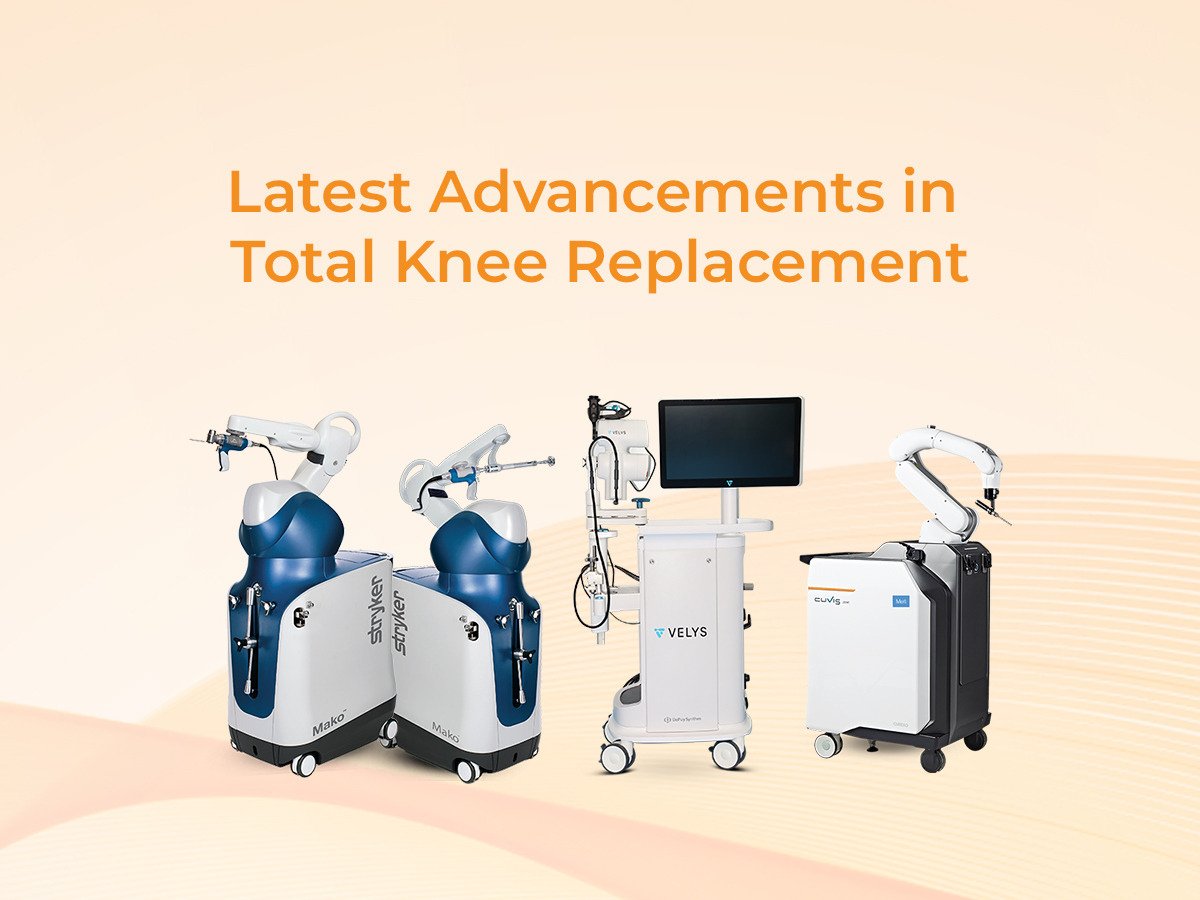
Latest Advancements in Total Knee Replacement
Joint replacement surgeries are often dreaded by many individuals who live in constant pain, as they are not aware of how much the field has changed in the last decade or so. They may think that dealing with chronic pain is now their new normal, but it does not have to be that way. Joint replacement surgeries are becoming much more crucial these days as older folk may have to deal with falls, fractures or related phenomena due to wear and tear or other degenerative conditions.
When is Knee replacement necessary?
So, when does knee replacement surgery or joint replacement actually become necessary? It is when all other treatment modalities have failed to provide you with any measure of relief- when painkillers seem useless, physiotherapy is more painful, when alternative therapies help less than usual and when your normal quality of life takes a direct hit. In such cases, living with the significant amounts of pain, stiffness and forced immobility can feel more like a punishment, rather than some compensatory measure that will help you feel better in the future.
Surgery is hence the last option for you to explore- and there are different kinds too- open surgery or minimally invasive knee replacement surgery. Deciding which one is better depends on the severity of your joint degeneration, your general health and what your expected activity levels may be, after getting it done. Your doctor will help you decide, as minimally invasive surgery may not be apt for everyone.
How is Minimally invasive knee replacement better?
Minimally invasive knee replacement is definitely better in a few aspects-
- The incisions are way smaller than traditional open joint surgeries- which means you will not scar as much.
- Too much tissue won’t be moved around, so trauma is also reduced- translating to lesser pain and better recovery.
- Your range of motion is preserved and will improve in a much shorter frame of time, when compared to traditional surgery.
What is Mako robotic knee replacement?
Mako robotic arm assisted knee replacement surgery is the latest instrument to help orthopaedic surgeons perform joint replacement surgeries in a much more streamlined and precise fashion than before. A detailed CT scan of the patient taken before will help the doctor come up with a personalized surgical plan – so that better implant placement can be achieved. The Mako instrument was developed by Stryker, a world leader in production of orthopaedic implants and different related surgical systems.
In this, a 3D model of the knee is constructed using CT scans, so that the right sized implant can be used. Then, during surgery, the surgeon uses the robotic arm to remove any infected or damaged bone and insert the implant. This process requires a lot of experience and extreme precision – which can make the joint feel more natural and usable after recovery.
Robotic knee surgery is now a staple in many advanced hospitals, with SBJI being one such specialty hospital, located in Hyderabad. We provide cutting edge Stryker knee replacement now. Our surgeons have immense experience and have performed thousands of surgeries, which means they have the know-how to deal with all kinds of cases- however severe they may be. Call us or schedule an appointment – because your joints need to endure through life, but you don’t need to endure pain always!
Frequently Asked Questions
MAKO is a robotic-arm assisted surgical system developed by Stryker that allows for greater precision in total or partial knee replacement. Unlike traditional surgery, MAKO uses CT-based 3D modeling of the patient’s knee to create a personalized surgical plan, enabling the surgeon to make highly accurate bone cuts and ensure optimal implant alignment. This can lead to quicker recovery, less pain, and improved long-term joint function.
Robotic-assisted surgeries like MAKO are not necessarily safer in every case, but they do offer increased precision, more consistent implant positioning, and better soft tissue balancing, which may reduce the risk of complications such as implant misalignment or early wear. These benefits often translate to faster recovery times, less post-operative pain, and greater patient satisfaction, especially in active or younger patients.
Most patients who are candidates for traditional knee replacement are also eligible for robotic-assisted surgery, including those with osteoarthritis, rheumatoid arthritis, or post-traumatic joint damage. However, the best candidates are typically individuals seeking precise customization, improved alignment, and potentially faster rehabilitation. Your orthopedic surgeon will assess your bone structure, health status, and activity level to determine the best approach.
While recovery varies by patient, those undergoing robotic-assisted knee replacement may experience less pain, better early mobility, and a faster return to daily activities than those who have traditional surgery. Most patients begin walking within a day and resume routine activities in 4–6 weeks, though full recovery can take a few months. Advanced technologies aim to shorten recovery time and optimize functional outcomes.
Yes, robotic-assisted knee replacement, such as MAKO, can be more expensive than conventional surgery due to the advanced technology and equipment involved. However, many insurance providers and health plans do cover robotic knee replacement if it’s deemed medically necessary. It’s important to check with your hospital and insurer to understand the specific costs and coverage details, as out-of-pocket expenses can vary depending on your policy and location.

